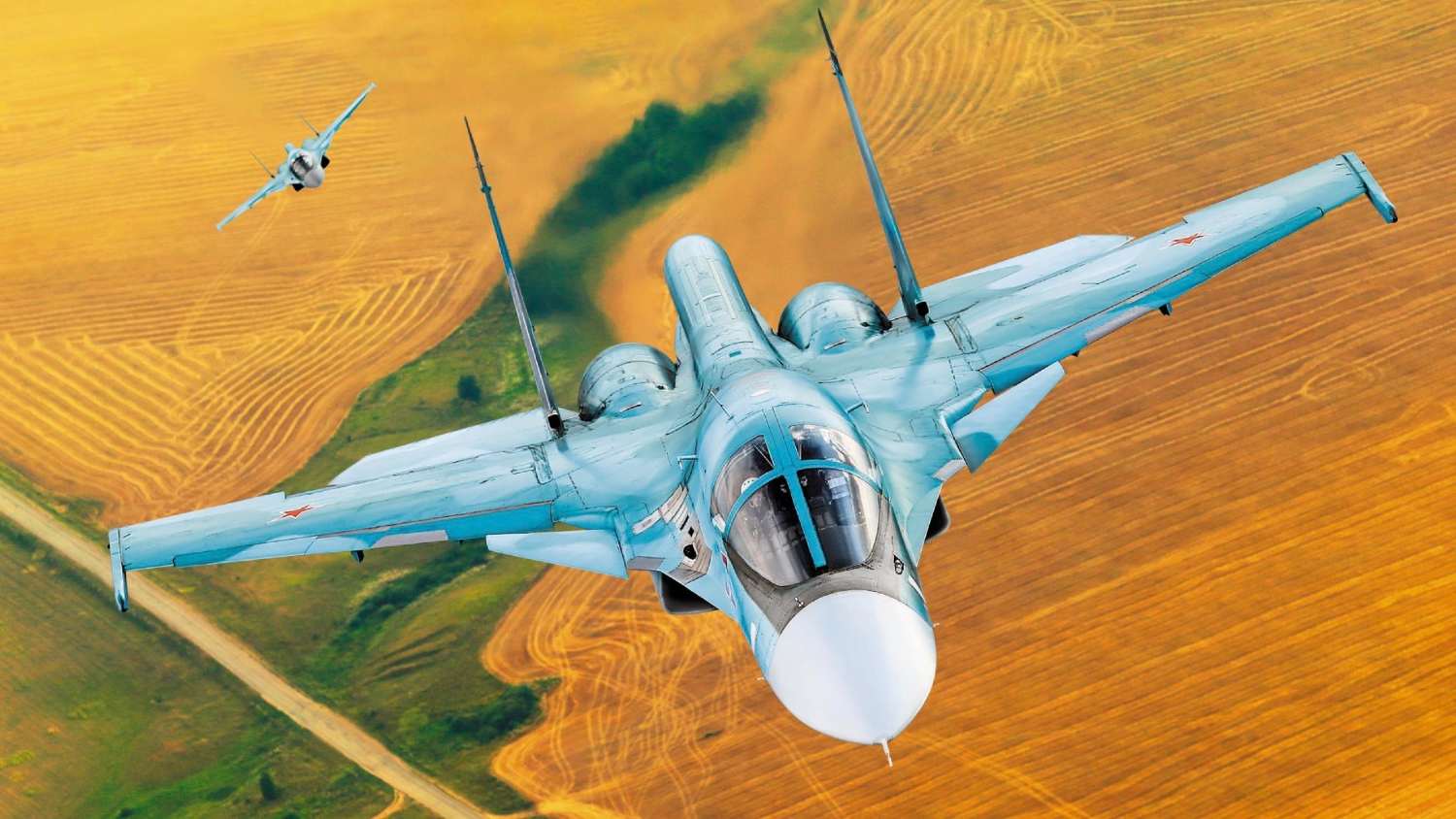Russia has developed an artificial intelligence-machine learning (AI-ML)-based system that detects defects in the glass of cockpits and the fixtures that hold it in place, usually affected by heavy wear and tear.
Stunningly Similar To Shahed-136 Suicide Drone, Chinese ‘Replica’ Of Iranian UAV Surfaces In New Video
Reports said that the laser device, Spekle, has been tested on the Su-34 fighter-bomber aircraft, the mainstay of the Russian Air Force’s (RuAF) ground attack fleet. This is also one of the several AI-enabled systems Russia has introduced for its fighters and ground weapons platforms.
The Su-57 fifth-generation stealth fighter and the Marker unmanned ground vehicle (UGV) were reported by Russian media as receiving AI-based pilot interface, communications, and target identification systems for autonomous operations. The Su-34 has seen heavy employment since the beginning of the war in February last year, flying high-altitude standoff missile firing and low-altitude bombing runs.
The aircraft will continue to be used as the fight continues, consequently taking a heavy toll on the airframe and maintenance logistics associated with the jet. It can be safely assumed that the Spekle will be mass-produced following its testing phase and used on other aircraft of the RuAF.
Lasing To Test Glazing
A report in RIA Novosti described the system as a “new laser complex with a neural network” meant to “test the glass of the cockpits of Russian Su-34 front-line bombers.” The development was revealed to journalists visiting the Air Force Academy by the officials there.
“The new complex provides an accurate determination of defects in the glazing of front-line bombers and an accurate determination of the degree of danger of these defects. Currently, an experimental model of the complex has been created, which has undergone military testing at one of the military airfields when assessing the technical condition of the glazing of the cockpits of operational-tactical aviation aircraft,” said a representative.
Repeated flights can lead to heavy stress on the frames and panes holding the glass, weakening the ‘glazing’ and compromising its integrity. Flying at different speeds and weather conditions causes vibrations on the airframe that weaken the aircraft’s bodies.
Using neural networks makes the system more autonomous, sparing the ground crew with arduous tests and examinations that are time-consuming.
Neural networks are a means of doing machine learning, in which a computer learns to perform a task by analyzing training examples. Based loosely on the human brain, a neural net consists of thousands or even millions of superficial processing nodes that are densely interconnected.
An individual node might be connected to several nodes in the layer beneath it, from which it receives data, and several nodes in the layer above it, to which it sends data.
The AI-ML device learns from its mistakes in a given task while being fed inputs and supervised by its human operators. “Checking one aircraft with the new system takes only 3-5 minutes,” an officer was quoted in the report.
The Spekle software and hardware complex detects defects in the glazing by analyzing the laser beam reflected from the glazing while pressurizing the cabin.
“The complex will eliminate the possibility of destruction of the Su-34 cockpit glazing in flight due to wear and tear,” the unnamed developer of the system was further quoted.

Russia’s Workhorse Bomber
The Su-34 front-line bomber is designed to destroy ground, surface, and air targets day and night in normal and adverse weather conditions. The aircraft has a crew of two and can carry up to eight tons of weapons on 12 external hardpoints, including air-to-air guided missiles of various types, air-to-surface guided missiles, aerial bombs, including adjustable ones, disposable bomb clusters, and unguided missiles.
These aircraft are actively used by the Russian Aerospace Forces in the Northern Military District zone. It has featured prominently in RuMoD updates over the last month, exploiting its full ground attack capability in hitting tactical Ukrainian land targets.
These include “manpower concentrations,” “temporary deployment points,” “ammunition depots,” and “AFU reserve concentrations” by carrying out “missile and bombing strikes” with “guided munitions.”
The Su-34 is the mainstay of the Russian Air Force’s battlefield standoff strike roles that employ long-range munitions without entering within the range of the capable air defense systems. On June 1, the RuAF received a fresh batch of Su-34s from the United Aircraft Corporation (UAC).
Based on the Sukhoi Su-27 Flanker air superiority fighter, the aircraft is designed for aerial warfare and bombing missions. A sophisticated, multi-mode phased array radar with terrain following and avoidance capabilities has been fitted to the Su-34’s nose section.
- The author can be reached at satamp@gmail.com
- Follow EurAsian Times on Google News




